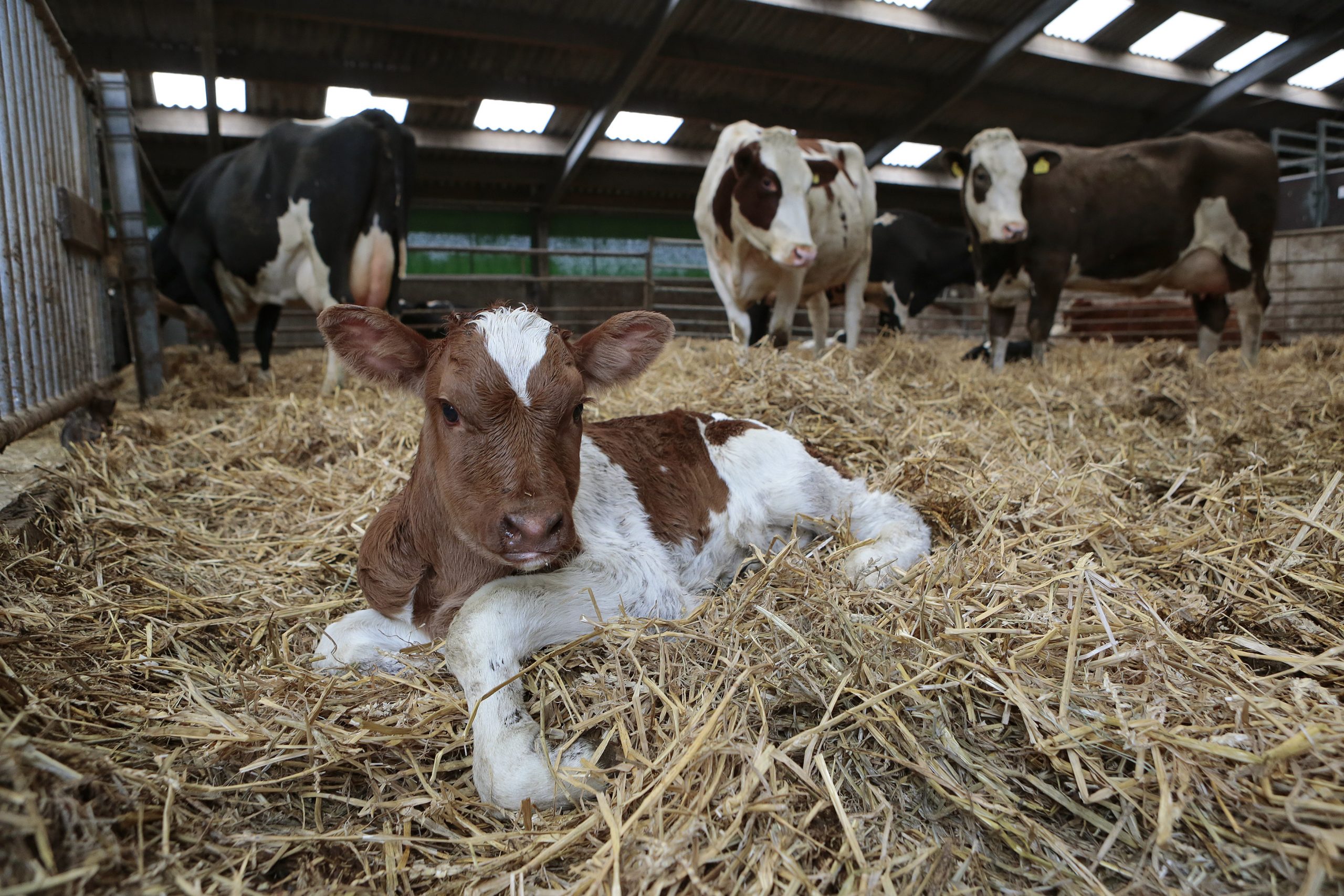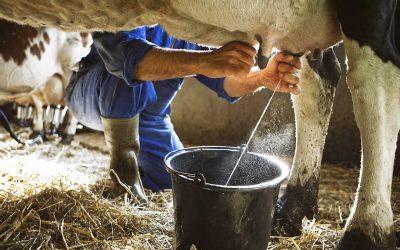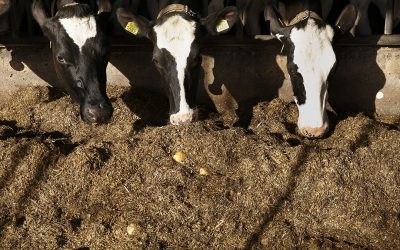Fats in cattle feed: What to consider

The addition of fat to diets of dairy animals can be beneficial to improve the energy balance in lactating cows and hence improves fertility, milk production, and other biological functions. But it must be carefully monitored.
Fat sources can be grouped into 2 major categories:
- natural fats
- commercial fats
Generally speaking, natural fats can be added to provide 2-3% to supplemental fat to diets. The benefit of commercial fats become more apparent when the total dietary fat level must exceed 5% of dietary DM. Commercial fats are important for their rumen inertness and are convenient due to their ease of handling. When making comparisons among different commercial fats, the price, availability, and characteristics that relate to palatability, inertness, and digestibility should be given a prime consideration. The amount of fat to include in the diet also depends on the other ingredients in the diet (e.g., high versus low-quality forage and level of unsaturated fat contributed by sources).
How much to feed?
Generally, 1% to 3% supplemental fat in the diet can be fed without adverse effects, but this depends on the saturation level of the fat and fibre level in the diet. The following equation may be used to calculate the amount of supplemental fat to add to a diet based on fibre level in the diet and unsaturated
FA (UFA) in the fat source (Jenkins, 1997): Fat, % of diet DM = (4×NDF)/UFA. Where UFA = unsaturated fatty acids as a percentage of total FA, and NDF = neutral detergent fibre. For example, a diet for dairy cows with 32% NDF and the consideration of using roasted soybeans, (4×32)/85 = 128/85 = 1.5% fat from the roasted soybeans. However, because roasted soybeans contain about 20% fat, then 7.5% of the diet could be roasted soybeans to provide 1.5% unsaturated fat in the diet from the soybeans.
Effect on fertility
The addition of fat may improve the reproductive parameters in 2 ways. The first is the improvement in the energetic status of the cow, and the other is the effect of fatty acids on the endocrine system. The addition of fat to the rations of dairy cows resulted in an increase in the levels of progesterone in blood. Progesterone is synthesised by the corpus luteum and is responsible for the good implantation of the embryo in the uterus and helps to maintain gestation, providing the embryo with food. The increase in progesterone in blood could be related to an increase in blood cholesterol and a larger size of the follicles when the diet is supplemented with fat. The FA profile of the supplemental fat is important for its positive impact on fertility, with linoleic acid being one of the causative FA. This has led to increased interest in feeding natural fat sources higher in linoleic acid and the development of calcium salts higher in linoleic acid.
Effect on milk and methane
Diets with added fat generally increase milk production compared with a control diet without added fat despite the reduction in DM intake observed with added fat, which is compensated for by the increased energy consumption. In cows, the increased milk yield is greater when given encapsulated animal fats or calcium salts of palm oil FA and when the saturation degree is higher. The addition of fat into the ruminant rations appears to be an efficient and easy way of reducing methane production and hence alleviating the negative effects of methane on energy efficiency. The effect of fats on methane production may, however, vary depending on the fat source, and may be attributed to the bio-hydrogenation of unsaturated fatty acids in the rumen, promotion of propionic acid production, and prevention of protozoa activity.
When used during the lactation phase
Since fat does not appear to reduce BW loss during early lactation and because of the palatability problems which sometimes exist with certain fats, it is advised not to feed high levels of fat until 30 days postpartum. This strategy will allow the cow some time to adjust to the lactation phase before the fat is included in the diet. The main strategy during the first 2 to 4 weeks of lactation should be to maximise DM intake rather than energy intake. After intake has reached an acceptable level, then energy intake can be the focus. Cows in early lactation fed on fat-supplemented diets may also suffer from ketosis (a metabolic disorder caused by an excess concentration of ketones in blood circulation as a result of the burning of fat for energy). To avoid this problem, nutritionists recommend avoiding supplemental fats and oils in fresh cow diets which will be “burned” to produce energy as the cow is in negative energy balance and keeps “melting” body fat. Instead, the emphasis should – again – be on increasing dry matter intake.

Rumen factors
From the rumen physiology point of view, cows are not prepared to handle fats and oils, at least in quantities that offer substantial coverage of their needs for high milk production. The problem here is focused on unsaturated fats. Unsaturated fats can be toxic to fibre-digesting bacteria. They also tend to cover fibre particles, thereby limiting access to fibre-digesting bacteria. The combination of both negatively affects fibre digestibility, leading to reduced rumen pH and thus, acidosis. It would be best if any and all fats and oils were excluded from dairy cow diets, but this is impractical. A better approach is to allow each cow to receive no more than half a kilogram of fat daily from whole seeds such as cottonseeds, soybeans, rapeseed, etc. Whole seeds are preferred to ground up ones as the fat is gradually released during rumination.
An additional quarter kilogramme of saturated fats (like grease and tallow) can be added to the above quantity of fat, and this only because saturated fats tend to be more expensive. If the opposite is true, up to three-quarters of a kilogramme of saturated fats alone can be fed. It is highly unlikely for a farm to be able to handle saturated fats, as these require special equipment to keep them fluid, especially during cold times. There are commercial sources of inert fats (highly saturated) that can be used without fear of affecting rumen pH. Such fats are hydrogenated lipids, calcium soaps and encapsulated forms. The only real negative is their high price, but they usually offer good value for money when high-yielding cows are concerned. In addition, they are in a dry convenient form and can be fed up to half a kilogramme per cow per day, along with the quantities of the other fats mentioned above.











